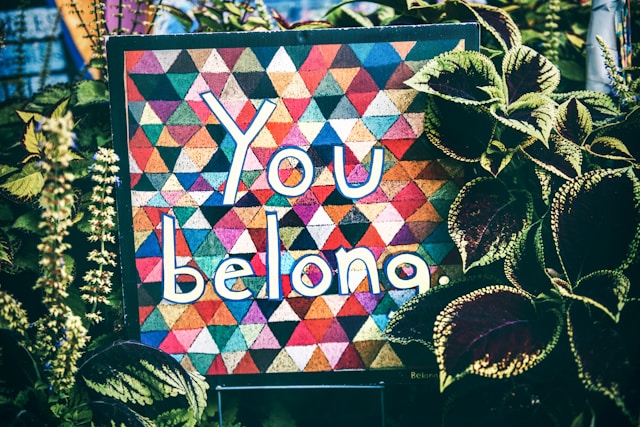Social innovation is a powerful force for creating an inclusive and sustainable economy. Social Innovation is defined as new solutions that meet societal needs more effectively than existing ones. It encompasses both incremental improvements and radical breakthroughs aimed at addressing complex challenges related to poverty, inequality, and exclusion. Social innovations can lead to greater social cohesion by promoting inclusive practices and policies. They often involve collaborative efforts between diverse stakeholders such as governments, nonprofits, businesses, and communities.
In the last years, the world is facing many changes, developments and transformations on many levels, topics, problems and challenges all creating opportunities for social innovation and social inclusion. The potential has been seen by social innovators that are using the potential of these transformations to create positive social change. The four important simultaneous transformations are: economic (decarbonization of industry), technological (merging digital and physical worlds), geopolitical (shift from unipolar to multipolar environment), and social (coping with massive changes and conflicting values).
Let’s discuss one by one these transformations and why they are important for the social innovation and how they can impact the social inclusion:
Economic transformation: This involve the shift to a low-carbon and circular economy, where resources are used efficiently and waste is minimized. This will create new opportunities for social innovation, such as green and social entrepreneurship, circular business models, and community-based renewable energy projects. Also it can generate social and environmental value, as well as economic benefits, for marginalized and vulnerable groups. However, this also poses challenges, such as the need to reskill and upskill workers, ensure a just transition for affected sectors and regions, and address the digital divide and the unequal access to green technologies.
Technological transformation: This involves the convergence of digital and physical worlds, enabled by advances in artificial intelligence, biotechnology, nanotechnology, robotics, and other fields. This will enable social innovation, such as digital platforms for social impact, telemedicine and e-health, online education and lifelong learning, and smart and inclusive cities. It can be improved the quality and accessibility of public services, empower citizens and communities, and foster social cohesion and participation. However, this also raises ethical, social, and security issues, such as the protection of privacy and data rights, the regulation of algorithms and artificial agents, the prevention of cyberattacks and digital fraud, and the mitigation of digital inequalities and exclusion.

Geopolitical transformation: This involves the shift from a unipolar to a multipolar world order, where multiple centers of power and influence coexist and compete. It will stimulate social innovation, such as cross-border and cross-sector collaboration, global citizenship and solidarity, multilateral and multi-stakeholder governance, and peacebuilding and conflict resolution. These can enhance the collective action and cooperation on global challenges, such as pandemics, climate change, and human rights. However, this also entails risks, such as the rise of nationalism and populism, the erosion of democracy and the rule of law, the escalation of trade and military tensions, and the fragmentation of the international system and norms.
Social transformation: This involves the changes in the values, norms, and behaviors of individuals and groups in response to the economic, technological, and geopolitical transformations. This can foster social innovation, such as social movements and advocacy, social and cultural diversity and inclusion, social and emotional learning and well-being, and social and creative entrepreneurship. These can promote the social and cultural capital, the resilience and adaptability, and the agency and voice of people and communities. However, this also implies challenges, such as the need to balance individual and collective interests, to reconcile conflicting values and identities, to cope with uncertainty and complexity, and to address social and psychological problems.
Following this, the World Economic Forum, has stated that in the last 25 years, social innovation has transformed the lives of more than 700 million people and continues to make a positive impact. 25 is not a long time, yet looks like decades and decaded behind, and taking breathless steps with the transformations, the social innovation is a never-ending process of creating and implementing solutions to social and environmental problems that are inclusive, sustainable, and scalable always taking the pace with the nowadays challenges.
Integrating social innovation into policy-making for social inclusion development
Luckly we are witnesses in all of these changes which means that the social innovation can be integrated into policy-making decisions that can have impact on social inclusion.
Before going into details, let take some steps back and explain the following:
What is social innovation? – Social innovation is the process of creating and implementing solutions to social and environmental problems that are inclusive, sustainable, and measurable.
What is social inclusion? – Social inclusion is the process of ensuring that all people, regardless of their background, identity, or circumstances, have equal opportunities and access to resources, services, and participation in society.
Whit this explained, we can continue to the topic – Integrating social innovation into policy-making for social inclusion development means designing and implementing policies that support and promote social innovation as a means to achieve social inclusion goals.
Still integrating social innovation into policy making processes requires a strategic approach that considers serious steps before applying it, such as:
– Identification of social problems: Analyzing the social challenges that are facing marginalized communities and overview of the socioeconomic environment for creating better understanding.
– Active engagement of diverse communities: Incorporation of different opinions, perspectives, and taking into account the needs of marginalized groups into the design process of social innovation initiatives.
– Collaboration and networking: Establishing partnerships with other actors, organizations, policy makers, stakeholders in order to use the resources and their expertise for creating deeper impact of social innovation projects.
– Addressing power imbalances: Working towards reducing the inequities by actively engaging with marginalized populations and providing them with opportunities to shape the direction of social innovation projects.
– Promotion of equitable and empowering solutions: Designing social innovation models that promote equity, empowerment, and access to opportunities for all members of society, especially those who are marginalized or excluded.
– Usage of the modern technology: Utilization of the digital platforms and tools to connect marginalized communities and facilitation of cross-sector collaboration.
– Measurement and evaluation: Implementing appropriate tools and methods to assess the effectiveness of social innovation projects, and continuously striving to improve upon them
– Continuous learning: Fostering a culture of continuous learning within social innovation projects, encouraging team members to stay informed about emerging trends and best practices.
– Adaptiveness: Adjustment and adaptation of the social innovation projects according to changing conditions and evolving needs.
What can do the social innovators about the progress of the social inclusion?
Social innovators can play an important role in advancing social inclusion by creating and implementing solutions that address the needs and aspirations of marginalized and vulnerable groups. Social innovators prioritize impact, equity, and justice over profit, providing creative solutions to the challenges. They tackle deep-seated problems related to environmental sustainability, health, education, and rural development.

They can also contribute to the integration of social innovation into policy-making by:
Engaging with policy-makers and other stakeholders to raise awareness, share best practices, and advocate for supportive policies and regulations for social innovation. his means that social innovators should communicate and interact with the public authorities and other relevant actors who have the power and influence to shape the policy environment and the institutional framework for social innovation. The purpose of this engagement is to inform them about the social problems and the potential solutions that social innovation can offer, to showcase the successful practices and the impact of social innovation initiatives, and to persuade them to adopt policies and regulations that enable and facilitate social innovation. For example, the Social Innovation Exchange (SIX) is a global network of social innovators that organizes events, workshops, and publications to raise awareness and share knowledge about social innovation among policy-makers and other stakeholders1
Participating in policy design and implementation processes, providing insights, feedback, and evidence from their experiences and impact. This means that social innovators should be involved in the policy cycle, from the problem definition and the policy formulation to the policy execution and the policy evaluation. The aim of this participation is to contribute to the policy-making process with their expertise, perspectives, and data from their social innovation activities, to ensure that the policies are relevant, effective, and responsive to the social needs and challenges. For example, the Center for Social Innovation at Stanford University conducts research and provides consulting services to policy-makers and other organizations on various social issues, such as health, education, and environment. Another example is the Social Innovation Community (SIC), a EU-funded project that engages with policy-makers and other stakeholders to co-create and implement social innovation policies in different domains, such as employment, migration, and energy.
Collaborating with other social innovators, as well as public, private, and civil society actors, to form networks, alliances, and partnerships that can scale up and replicate social innovations across contexts and sectors. his means that social innovators should work together with other actors who share their vision and mission, or who can complement their skills and resources, to create synergies and leverage their collective impact. The goal of this collaboration is to expand and multiply the social innovations that have proven to be effective, to reach more beneficiaries and address more social problems, and to create systemic and sustainable change. For example, Ashoka is a global organization that supports social entrepreneurs by connecting them with other changemakers, investors, and partners, and by providing them with access to funding, mentoring, and training. Another example is the Global Alliance for Social Entrepreneurship, which is a network of over 100 organizations that represent 100,000 social entrepreneurs worldwide, and that aims to create a new ecosystem that links the social economy with the private sector and the public sector.
Innovating in policy-making itself, using creative and participatory methods, such as design thinking, co-creation, and prototyping, to generate and test new policy ideas and solutions. This means that social innovators should apply the principles and tools of social innovation to the policy-making process itself, by involving the end-users and other stakeholders in the policy design and delivery, by experimenting with different policy options and learning from the feedback, and by adapting and improving the policies based on the results and the changing context. The objective of this innovation is to make the policies more user-centric, more evidence-based, and more agile and flexible. For example, the Policy Lab is a team within the UK government that uses design methods and data science to improve policy-making and public services. Another example is the Nesta Innovation Skills Team, which provides training and guidance to policy-makers and public servants on how to use innovation methods and tools, such as design thinking, systems thinking, and behavioral insights.
Social innovation and social inclusion are closely related concepts that require the involvement and cooperation of various actors, such as social innovators, policy-makers, and other stakeholders. They can contribute to the integration of social innovation into policy-making, by using creative and participatory methods, such as design thinking, co-creation, and prototyping, to generate and test new policy ideas and solutions.
Author: Martina Durljanova
Resources:
https://journals.sagepub.com/doi/10.1177/2319510X221144657
https://www.oecd-ilibrary.org/sites/d2c8fe35-en/index.html?itemId=/content/component/d2c8fe35-en
https://www.publicengagement.ac.uk/resources/guides/guide-working-policy-makers
https://sici.hks.harvard.edu/3p-framework-for-social-innovators/






